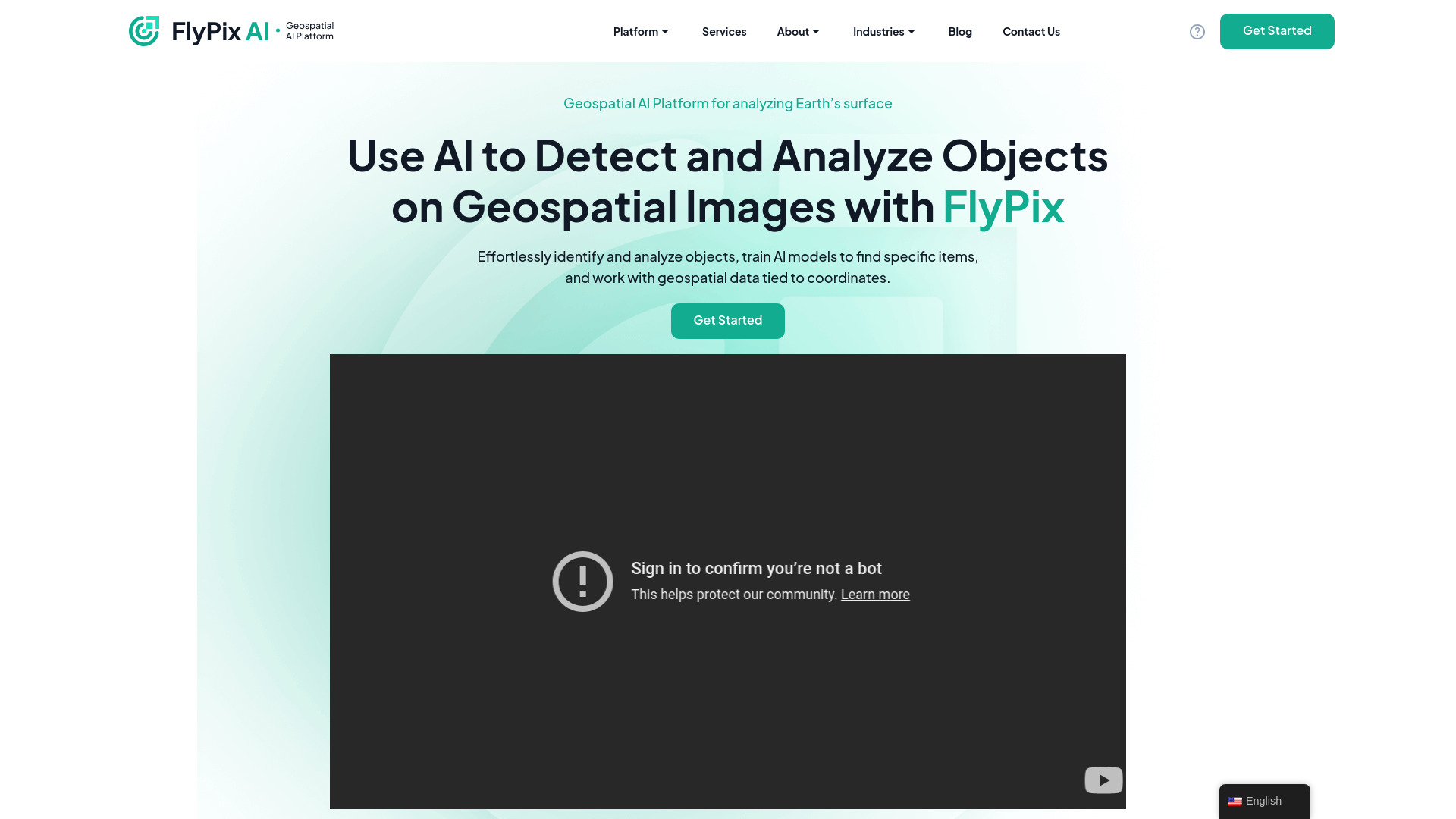- Home
- AI Image Recognition
- FlyPix AI

FlyPix AI
Open Website-
Tool Introduction:FlyPix AI: no-code geospatial vision to detect objects and train models
-
Inclusion Date:Nov 02, 2025
-
Social Media & Email:
Tool Information
What is FlyPix AI
FlyPix AI is a geospatial AI platform for detecting and analyzing objects in satellite and aerial imagery. It helps users quickly identify features, measure patterns, and extract insights tied to precise coordinates. With an intuitive interface and automated model training, teams can build custom detectors for specific items—such as buildings, roads, or equipment—without prior AI or machine learning experience. The platform streamlines annotation, training, and inference workflows, enabling faster, consistent analysis across large areas of interest.
Main Features of FlyPix AI
- Object detection on geospatial imagery: Automatically find and count objects in satellite, aerial, or drone images to accelerate manual mapping and inspection tasks.
- Custom model training without coding: Train AI models to detect specific items or classes using guided steps, no ML expertise required.
- Coordinate-aware analysis: Work with geo-referenced data so every detection is tied to precise coordinates for spatial queries and reporting.
- Annotation and labeling tools: Create high-quality training datasets with intuitive annotation workflows that improve model performance.
- Scalable inference: Run detections across large areas of interest to produce consistent, repeatable results at scale.
- Map-based visualization: Explore results on interactive maps, review detections, and refine outputs for GIS and decision-making workflows.
- Team-friendly interface: Simplifies collaboration between GIS analysts, domain experts, and project stakeholders.
Who Can Use FlyPix AI
FlyPix AI suits GIS teams, remote sensing analysts, urban planners, environmental specialists, infrastructure owners, utilities, insurers, and researchers who need reliable object detection and spatial analysis from imagery. it's ideal for organizations that want to turn raw satellite or aerial data into actionable layers without building custom ML pipelines.
How to Use FlyPix AI
- Import imagery by uploading satellite, aerial, or drone data associated with your area of interest.
- Define the objects or classes you want to detect and set project goals.
- Annotate representative samples to create a training dataset using built-in labeling tools.
- Train the model with guided settings; monitor progress and review preliminary metrics.
- Validate performance on holdout images; adjust labels or parameters as needed.
- Run inference over your target area to generate coordinate-linked detections.
- Review results on the map, filter by class or confidence, and export outputs for downstream GIS workflows.
FlyPix AI Use Cases
Organizations use FlyPix AI for asset inventory (detecting buildings, rooftops, or solar panels), infrastructure monitoring (roads, pipelines, power equipment), land-use and land-cover mapping, vegetation and encroachment checks near critical assets, construction progress tracking, and rapid damage assessment after storms or floods. The platform turns large volumes of imagery into consistent spatial insights that support planning, compliance, and operations.
Pros and Cons of FlyPix AI
Pros:
- No AI or machine learning background required to train custom detectors.
- Coordinate-accurate results support robust GIS and reporting workflows.
- Streamlined annotation-to-inference pipeline improves productivity.
- Handles large imagery datasets for scalable object detection.
- Clear, map-based visualization aids review and quality control.
Cons:
- Model accuracy depends on label quality and imagery resolution.
- Training may require sufficient annotated examples for niche objects.
- Processing large areas can be resource- and time-intensive.
- Users new to geospatial data may face a learning curve with imagery preparation.
FAQs about FlyPix AI
-
Does FlyPix AI require coding skills?
No. The platform is designed to let users train and run models without prior AI or machine learning experience.
-
What imagery types can it analyze?
FlyPix AI works with geospatial imagery such as satellite, aerial, and drone images that are tied to coordinates.
-
Can I train models to find specific objects?
Yes. You can define classes, annotate samples, and train custom detectors tailored to your use case.
-
Are detections linked to map coordinates?
Yes. Results are geo-referenced, enabling spatial queries, measurement, and integration into GIS workflows.
-
How can I improve detection accuracy?
Use diverse, high-quality annotations, ensure representative samples, and refine labels and training iterations.


